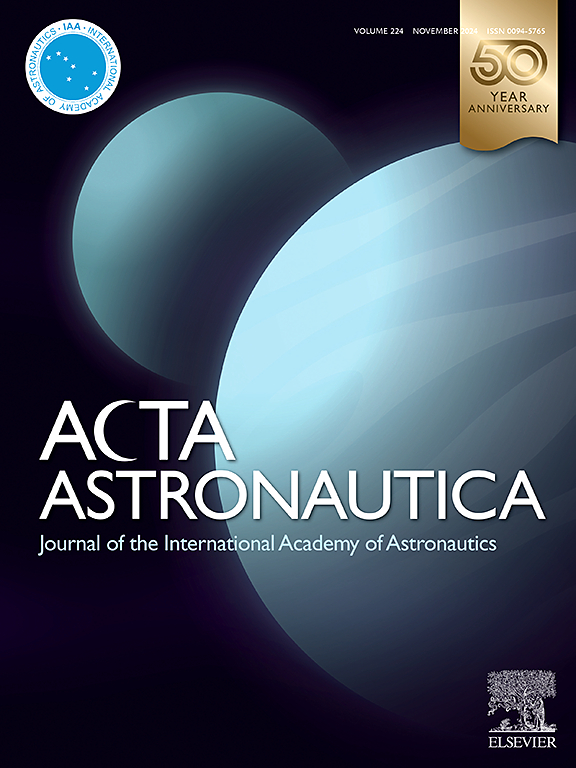TMEDA和WFNA在自燃燃料系统中的点火和燃烧特性实验研究
IF 3.4
2区 物理与天体物理
Q1 ENGINEERING, AEROSPACE
引用次数: 0
摘要
对含液体成分自燃燃料的点火和燃烧规律和特性进行了实验研究。实验采用四亚甲二胺C6H16N2作为燃料,高浓度硝酸HNO3作为氧化剂。燃料和氧化剂液滴的初始体积为10 μl。燃料液滴相对于氧化剂液滴的高度在5 ~ 20 cm之间。在实验研究中,确定了以下特性:点火延迟时间、燃尽面积和火焰温度。用纹影法记录了各组分相互作用的特征。随着燃油滴落高度的变化,点火延迟时间在42.4 ~ 54.9 s之间变化,燃尽面积平均值在0.42 ~ 7.59 cm3之间变化。此外,燃料液滴落在氧化液滴上的高度越大,点火延迟时间越短,燃尽面积越大。本文章由计算机程序翻译,如有差异,请以英文原文为准。

Experimental study on the ignition and combustion characteristics of TMEDA and WFNA in hypergolic fuel systems
An experimental study of the patterns and characteristics of ignition and combustion of hypergolic fuels with liquid components has been carried out. The experiments used tetramethylethylenediamine C6H16N2 (fuel) and highly concentrated nitric acid HNO3 (oxidizer). The initial volume of fuel and oxidizer droplets was 10 μl. The height of the fuel droplet fall relative to the oxidizer droplet varied from 5 to 20 cm. During the experimental studies, the following characteristics were determined: ignition delay times, burnout areas, and flame temperatures. The characteristics of the components interaction were also recorded using the Schlieren method. When varying the height of the fuel droplet fall, the ignition delay times change in the range of 42.4–54.9 s, the average values of the burnout areas change from 0.42 to 7.59 cm3. Moreover, the greater the height of the fuel droplet fall onto an oxidizer droplet on a plate, the shorter the ignition delay times and the larger the burnout areas.
求助全文
通过发布文献求助,成功后即可免费获取论文全文。
去求助
来源期刊

Acta Astronautica
工程技术-工程:宇航
CiteScore
7.20
自引率
22.90%
发文量
599
审稿时长
53 days
期刊介绍:
Acta Astronautica is sponsored by the International Academy of Astronautics. Content is based on original contributions in all fields of basic, engineering, life and social space sciences and of space technology related to:
The peaceful scientific exploration of space,
Its exploitation for human welfare and progress,
Conception, design, development and operation of space-borne and Earth-based systems,
In addition to regular issues, the journal publishes selected proceedings of the annual International Astronautical Congress (IAC), transactions of the IAA and special issues on topics of current interest, such as microgravity, space station technology, geostationary orbits, and space economics. Other subject areas include satellite technology, space transportation and communications, space energy, power and propulsion, astrodynamics, extraterrestrial intelligence and Earth observations.
 求助内容:
求助内容: 应助结果提醒方式:
应助结果提醒方式:


